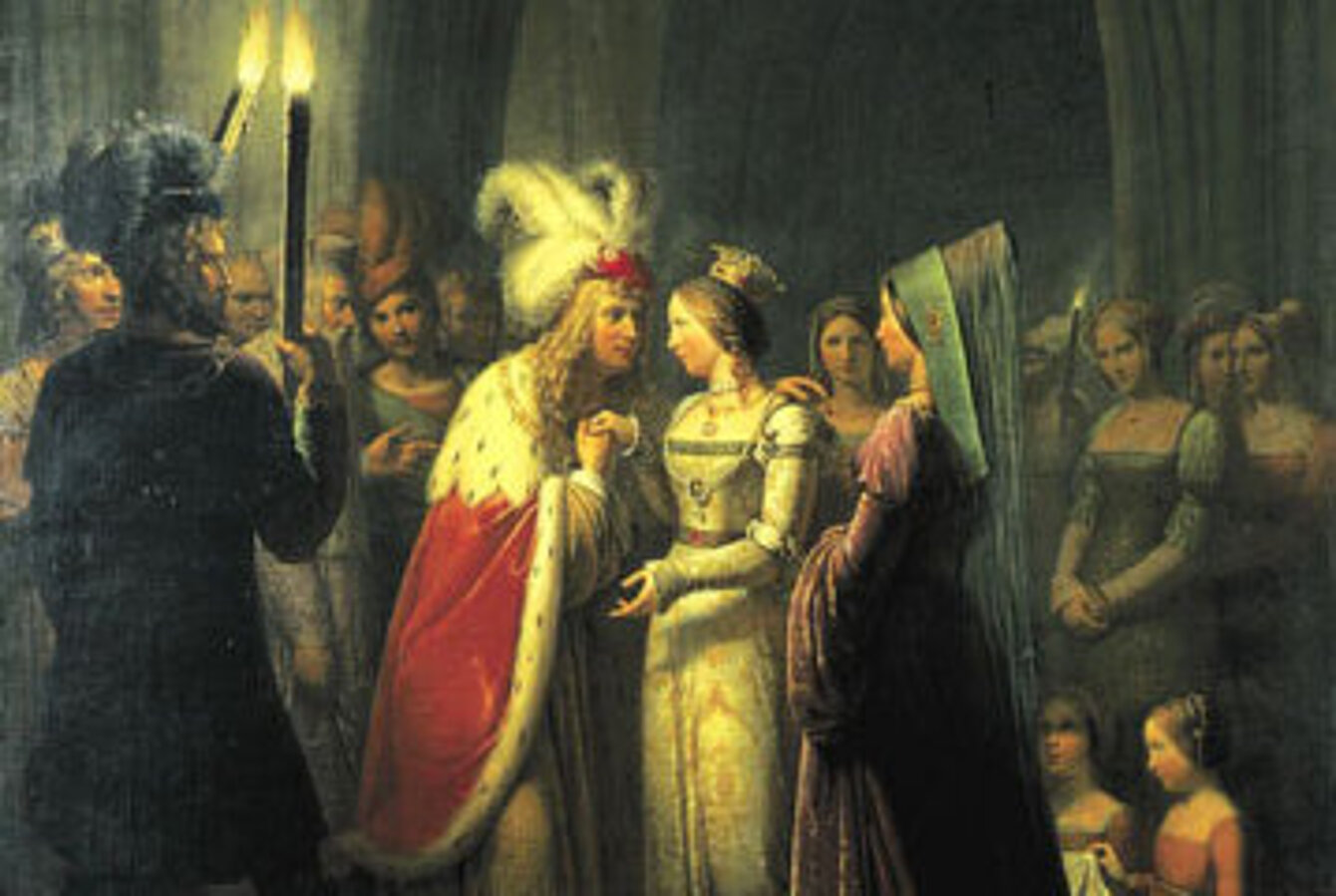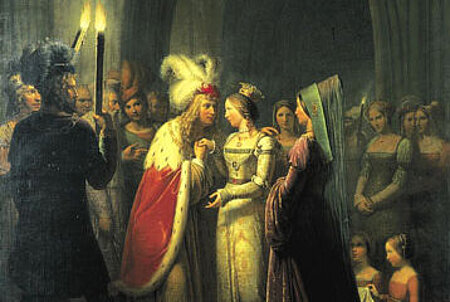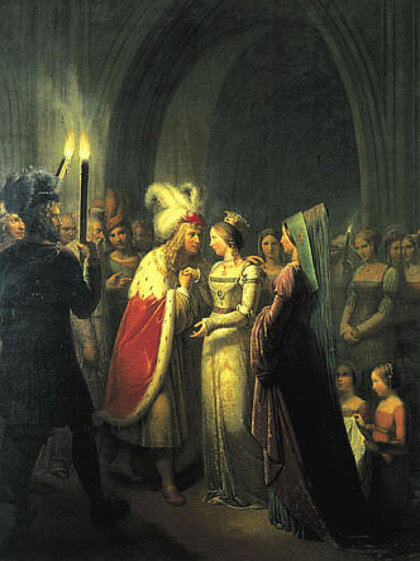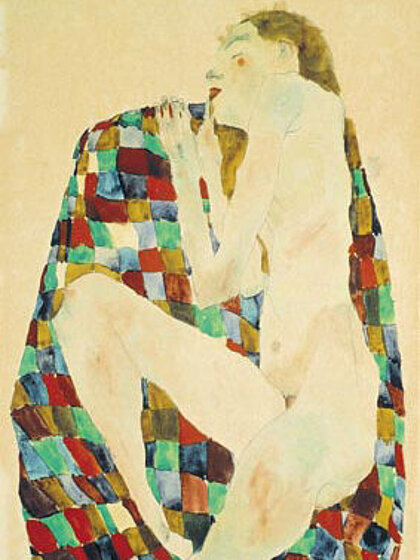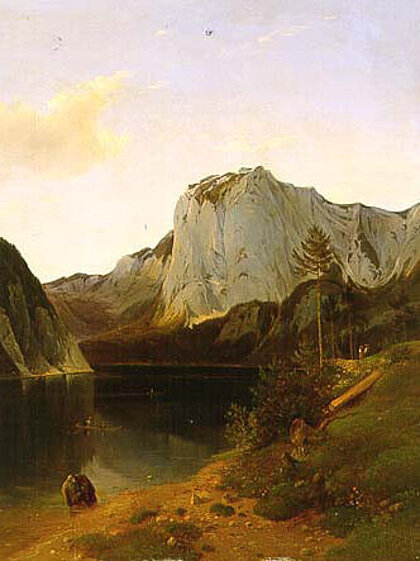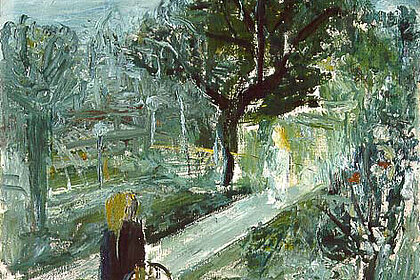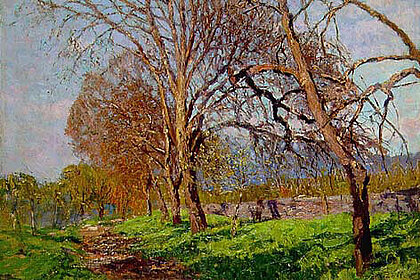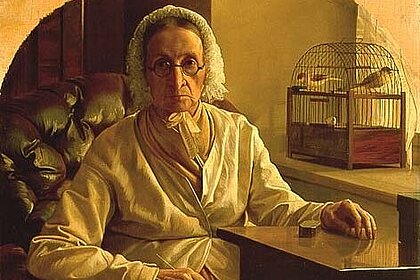The exhibition has been designed with particular regard to the surroundings: Visitors will be able to experience and enjoy the airy spaciousness of the mansion and its setting of landscaped park.
The exhibition concept revolves around the character of the collection. Initiated at the beginning of the 19th century, at its core we find Austrian art in general, and especially Styrian art, from this period. So the show, stretching from around 1800 through to the 1920s, is an opportunity to study the work of Styrian artists not often displayed otherwise, alongside leading Viennese masters. Quality was the deciding factor in making the selection, but we also focused on elements that until now have received little attention. The works are hung according to a basic chronology.
We begin with the ideal world of Classicism and landscapes and histories of the Vienna Academy by Schödlberger, Kniep, Petter and Füger. Biedermeier painting strove above all to capture the actual world within a picture. The work of one of its pioneers, Franz Steinfeld, is represented here with magnificent views of the lakes of the Salzkammergut. Friedrich Gauermann took the Biedermeier landscape further – from intimate studies of nature to dramatic compositions, which were then widely emulated to great success. Inspired by progressive ideas, Archduke Johann asked his painters to produce systematic depictions of the Styrian landscape. We have dedicated a graphic cabinet to their works. Another cabinet holds views of Graz by the Kreuzer brothers, Kuwasseg, Passini and others. Ferdinand Georg Waldmüller is represented with scenes of the genre that clearly reveal his moral stance towards the arts. Adopting a humorous yet also profound and critical outlook, Josef Danhauser's work of 1829 addresses contemporary art production between academy and clients. Amerling's portrait of Countess Julie von Woyna, later von Benedek by marriage, is an outstanding example of Biedermeier portraiture. Following her legacy of 1895, Countess von Benedek became one of the most prominent patrons of the Neue Galerie. Ernst Christian Moser, a student of Waldmüller, worked as a portrait and genre painter in Graz. His portrait of his mother in particular is fascinating for its astonishing realism. Ferdinand Mallitsch, also born in Graz, is singled out for special attention: isolated from the art world, Mallitsch developed a refined and deeply personal style.
The works of the French Barbizon painters, on long-term loan from Dr. Rudolf Polheim of Basel, form a special part of the collection. The Barbizon circle no longer restricted themselves to only sketching outdoors, but would frequently also complete their oil paintings out in the open. This was a new method at the time; as a result, they are considered to be the forerunners of impressionism. Following on from them and acting as a counter-movement to the post-Biedermeier landscape, which had meanwhile turned academic, 'atmospheric realism' emerged in Austria. Some of the most beautiful paintings within the exhibition come as a result of this movement, works by Schindler, Egner, Hörmann, Jettel and Alfred Zoff.
The light and exoticism of the orient were adopted as subject matter by the 'orientalists'. Their pictures sold well, a clear indication of the kind of yearnings people felt during the 'Grunderzeit'. Alois Schönn was one of the movement's pioneers in Austria; Leopold Carl Müller was probably its most famous exponent. He was friends with Pettenkofen, founder of the Szolnok group in Hungary, where many Viennese painters, amongst them Johann Gualbert Raffalt, chose to work, inspired by the light and exotic motifs they found there. In Vienna, the 'Grunderzeit' produced a style that was to shape all areas of life at the time. This style was named after its most famous painter, Hans Makart. His paintings are often theatrically staged historical or literary scenes. Kray and Seyffert's paintings reflect the tastes of contemporary bourgeoisie, by now the most prominent social class: an emotive intertwining of the present with mythology.
The radical renewal in art brought about the Viennese Secession is to be observed in its graphic works, and first and foremost in the drawings of Gustav Klimt. His sketches for some of the famous portraits of women and for the university frescoes, which triggered an enormous scandal, merit particular mention here. One of the great highlights of the collection is Egon Schiele's "Stadtende" (End of town), painted in his last year, 1918. The unique drawings and watercolours of this most important proponent of Austrian expressionism, mainly nudes of women and girls, demonstrate the radicality and genius of his approach. Two internationally renowned Styrian artists, both of whom developed a highly individual style, bring the exhibition's time span to a close and at the same time give a view into modernism: Wilhelm Thöny and Alfred Wickenburg. The Neue Galerie's intention in staging this exhibition is to arouse curiosity and interest in the worlds of imagery passed down to us over the centuries. We warmly invite you to enjoy this "hidden, secluded collection with a host of surprises, beauties and rarities" (A. Wied, 1996).




















